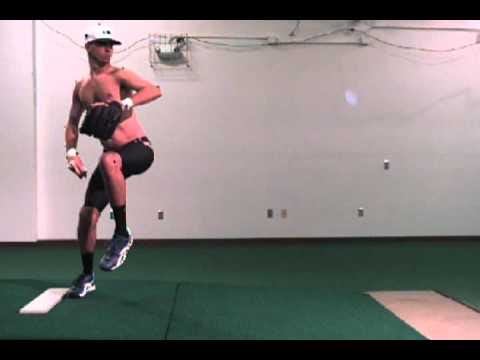What do you mean you don’t read the Journal of Science and Medicine in Sport? I’ll admit, it’s not at the top of my list either. (I’m in the midst of the latest John Sandford novel, actually, and it’s predictably awesome.) That said, JSMS has a study that will be of interest to a lot of people, including MLB and the Atlantic League. You won’t be able to see the full text, but the abstract is available.
In summary, the good folks at the American Sports Medicine Institute (ASMI), including Drs. Andrews, Fleisig, Cain, and Dugas, put together a study that took a look at moving the mound back - away from home plate, increasing the distance of a pitch - as a way of “evening up” things in baseball. You’ll remember that MLB was due to experiment with this in the Atlantic League last year, though it was changed at the last minute.
In this study, ASMI took 26 college pitchers from across the spectrum, mixing up levels (D1, D2, etc), handedness, height, and more. While it’s not a large sample, it’s a good enough one for a study like this. The pitchers were then marked up and threw from three distances in the ASMI lab while having their motion captured and analyzed. They threw from three distances - the standard 60’6, then at 62’6, and 63’8 - and threw full effort fastballs at each distance.
The results are a bit surprising. The distance really didn’t matter to the kinematics or the kinetics. The ball’s velocity was the same. The strikes they threw were roughly the same. Their mechanics were the same.
What changed? The time of flight, which makes sense. A 95 mph fastball is still a 95 mph fastball, but the reaction time is changed by the distance, though I do have questions about the “slowdown” change that aren’t addressed here. A ball, due mostly to air resistance, slows down from the pitcher’s hand to the catcher’s glove in a largely known pattern. A greater distance would mean a slower ball as it passes through the hitting zone, which does change some things, including with energy transfer on contact.
What else changed? Well, that could be the big part. The break, both horizontal and vertical, increased. Again, this makes sense with a greater distance for the forces that make a ball move to act. I’ve long speculated that the biggest change for pitchers with a mound movement wouldn’t be the loss of velocity but the needed change to dial in breaking pitches.
That’s not to say that they can’t. Big power sliders will move more. Not really more, but will have more time to continue their movement. It will take pitchers time to adjust, but they will be able to dial that in and if they don’t change their mechanics, it remains essentially the same pitch despite the distance. The question we don’t know is whether or not this ends up a good trade for the pitchers.
Would this create a slider-happy environment? I think it would certainly encourage a shift, at least initially, to pitches that move. It will also create an environment where those who can make the adjustment quickly will have an advantage over other pitchers who do not adjust so quickly. Hitters? That remains to be seen. With what we know about “pitch cost”, there’s no real danger here to more sliders, assuming of course that the pitch is thrown correctly.
But does this solve the problem overall? We’ve seen velocity become the everything for baseball, especially at lower levels and in training, over the last decade. We’ve seen average fastball velocity moving up and up over that same time frame. That’s unlikely to change, so moving a pitcher back is as likely as not to just make him want to throw the ball that much harder. Aroldis Chapman and anyone over 100 is still going to dominate, but will someone at 88-90 lose enough to make that unplayable?
This study does not address elbow stress directly, but the unchanged velocity and mechanics means it is likely that nothing changes there either. Stress tends to increase with force, though the linearity of it is individual. There’s enough here to say that an experiment with the mound, assuming it is done in a smart manner and that both pitchers and hitters are allowed time to adjust, ideally from the start of training, would be a reasonable adjustment to the game.
We’ve seen what mound changes have done to the game in the past. It’s impossible to say what this would do, but my guess is it wouldn’t fundamentally change the game or increase the offense as significant as the ‘68 to ‘69 mound drop. I do think it will change what we see, though I believe it will push the “three true outcomes” even more, which might not be what MLB really wants.
There’s more to unpack in this study, so I expect to come back to this next week. I’m very curious your thoughts, so be sure to email me your questions and comments.




